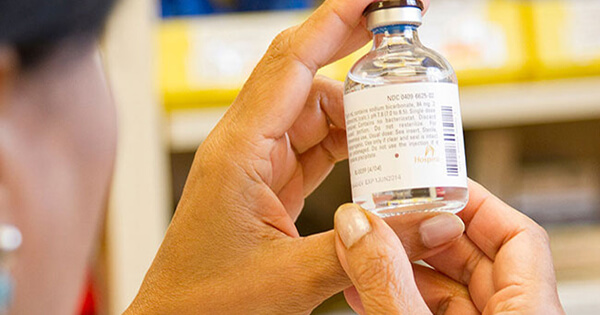In a major step to give relief to the cancer patients, the Modi government has slashed the price of nine anti-cancer drugs. National Pharmaceutical Pricing Authority (NPPA), the price regulatory organization, which caps the price of essential drugs under National List of Essential Medicines under Schedule I of Drug Price Control Orders (DPCO), has put chemotherapy injections which are commonly used for lung cancer treatment in the price control list. The price of chemotherapy injection pemetrexed (500mg) has been reduced to 2,800 rupees from 22,000 rupees. The price of the 100mg dose has come down to 800 rupees from 7,700 rupees. The move will benefit 22 lakh cancer patients in the country and reduce their pocket expenditure on healthcare.
Except for Pemetrexed injections, the price of 8 other anti-cancer drugs was reduced. The other drugs prices of which were reduced include epirubicin (brand name Epichlor), erlotinib tablets, sold as Erlotaz, everolimus (brand name Lanolimus), leuprolide acetate hormonal therapy injection (brand name Leuprogon Depot). “Most of these are commonly used in several cancer therapies. The cost cut will be extremely beneficial to patients, particularly those who spend out of their pocket,” said Apollo Specialty Hospital senior oncologist Dr. T Raja.
This is the second time the Modi government has slashed the price of anti-cancer drugs. Previously, the Modi government has slashed the price of 390 cancer drugs by 87 percent in the month of February under Drugs (Prices Control) Order, 2013. The annual saving of cancer patients in the country due to government price control is expected to be around 800 crore rupees.
According to the draft of National Health Policy, “Over 63 million people are faced with poverty every year due to healthcare costs alone. It is because there is no financial protection for the vast majority of healthcare needs.” The poor and needy were previously required to sell their assets like jewellery in order to get quality healthcare or ended up borrowing money from sahukars who levy heavy interests. The share of non-regular expenditure on healthcare as a proportion of total household monthly per capita expenditure is 6.9 percent in rural areas and 5.5 percent in urban areas. Hence, the Janaushadhi outlets under PMBJP scheme are set to bridge the gap as far as medical facilities in the urban and rural areas are concerned.
Modi government launched Ayushman Bharat scheme on September 23, from Jharkhand. Under the scheme, the Modi government has provided 5 lakh health insurance cover to 50 crore people, which is nearly 40 percent of the population of the country. Besides the insurance cover, the government is working to create 1,50,000 wellness centers across the country under the Ayushman Bharat scheme. The wellness centres which include Sub-Centres, Primary Health Centers (PHC) and Community Health Centres (CHC) are first-line healthcare access to the people of the country. The families which will benefit from the scheme will be identified from the Socio-Economic and Caste Census (SECC), 2011 data.
Healthcare has been a key issue under the Modi government. The government launched Modicare, which is the largest public healthcare program in the world. It is also one of the cheapest and most efficient schemes, its success provides a template to all countries with similar per capita GDP to provide universal healthcare.
